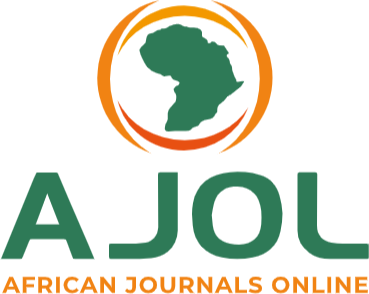Determination of Some Physicochemical Properties, Heavy Metals and Micronutrients of Some Energy Drinks Available in Nigeria
Keywords:
Energy drinks, Heavy metals, Micro nutrients, physicochemical propertiesAbstract
This study investigates the concentrations of selected elements in energy drinks and assesses their compliance with international safety standards. Energy drinks have gained widespread popularity, but concerns regarding the presence of heavy metals and their potential health risks necessitate rigorous scientific evaluation. This study aimed to determine the levels of copper (Cu), iron (Fe), manganese (Mn), zinc (Zn), and chromium (Cr) in commercially available energy drinks and evaluate their potential health implications. A total of 30 energy drink samples were analyzed using atomic absorption spectrophotometry (AAS) and energy dispersive x-ray fluorescent (EDXRF) . Statistical analyses, including correlation analysis, chi-square tests, and multiple regression, were performed to identify significant relationships between elements and deviations from World Health Organization (WHO) permissible limits. The results showed that Mn had a strong positive correlation with Cu (r = 0.686, p < 0.01), while Fe and Zn exhibited no significant influence on Mn concentrations. The chi-square test revealed that some elements exceeded WHO-recommended limits, with Cu and Mn concentrations in certain samples posing potential health risks. Multiple regression analysis indicated that Cu significantly predicted Mn concentration (β = 0.686, p = 0.001), explaining 48.8% of the variance (R² = 0.488). In contrast, the regression model for Zn showed no significant predictive power (R² = 0.018, p = 0.936), indicating weak associations between Zn and other elements in the energy drinks. These findings highlight the need for stricter regulatory monitoring and enforcement to ensure that elemental concentrations in energy drinks remain within safe limits. Manufacturers should enhance quality control measures to prevent contamination and safeguard consumer health. Further research is recommended to explore additional factors influencing heavy metal accumulation in energy drinks, including ingredient sourcing, production methods, and storage conditions.
Downloads
Published
Issue
Section
Similar Articles
- Dorathy Edet Etim, Nnamso Effiong Essien, Aniebiet Mmekuwem Essien, Impacts of Acute Toxicity of Heavy Metals (Hg And Pb) On Liver Enzymes of Normal Albino Wistar Rats , Communication In Physical Sciences: Vol. 11 No. 4 (2024): VOLUME 11 ISSUE 4
- Aniekan Udongwo, Monitoring, Assessment, and Remediation of Heavy Metal Contamination: Techniques, Strategies, and Policy Frameworks , Communication In Physical Sciences: Vol. 10 No. 3 (2023): VOLUME 10 ISSUE 3 (2023-2024)
- Buhari Aminu Balesa, Abdullahi Lawal, Saddiq Abubakar Dalhatu, Bala Idris, Mustapha Bello, First Principles Calculations of Structural, Electronic and Optical Properties of Nitrogen-Doped Titanium Dioxide for Solar Cells Application , Communication In Physical Sciences: Vol. 7 No. 4 (2021): VOLUME 7 ISSUE 4
- Emeka Chima Ogoko, Nkoli Mgbemana, Kelle Henrietta Ijeoma, Heavy metals contamination of Anambra River , Communication In Physical Sciences: Vol. 6 No. 1 (2020): VOLUME 6 ISSUE 1
- Bala Idris, Abdullahi Lawal, Dauda Abubakar, Saddiq Abubakar Dalhatu, Ab initio Calculation of CuSbSe2 in Bulk and Monolayer for Solar Cell and Infrared Optoelectronic Applications , Communication In Physical Sciences: Vol. 7 No. 3 (2021): VOLUME 7 ISSUE 3
- Elizabeth C. Nwaokorongwu, Dual Solution Synthesis and Characterization of Sns:Zns Alloyed Thin Films and Possible Applications in Solar Systems and Others , Communication In Physical Sciences: Vol. 9 No. 2 (2023): VOLUME 9 ISSUE 2
- Abdullahi Lawal, Musa Bello, Ahmed Musa Kona, Quasi-particle band structure and optical properties of Perylene Crystal for Solar Cell Application: A G0W0 Calculations , Communication In Physical Sciences: Vol. 8 No. 2 (2022): VOLUME 8 ISSUE 2
- Dr Fatai Afolabi, Mr Ismaila Jide Olawale, Professor Sunday 0. 0ladoye, Physicochemical, Phytochemical and Gas Chromatography- Mass Spectrometric Analyses of Gmelina Arborea Root Hexane Extract , Communication In Physical Sciences: Vol. 12 No. 6 (2025): Volume 12 ISSUE 6
- Eneni Roberts Inala, BIOACCUMULATION OF ENVIRONMENTAL CONTAMINANTS IN OYSTER (Crassostea sp.) TISSUES IN BAYELSA STATE, NIGERIA , Communication In Physical Sciences: Vol. 12 No. 4 (2025): VOLUME1 2 ISSUE 4
- S. A. Odoemelam, Investigation of Adsorption of Tetraoxosulphate (I) ions by Some Agricultural Soils in Akwa Ibom State, South-South igeria , Communication In Physical Sciences: Vol. 5 No. 2 (2020): VOLUME 5 ISSUE 2
You may also start an advanced similarity search for this article.




